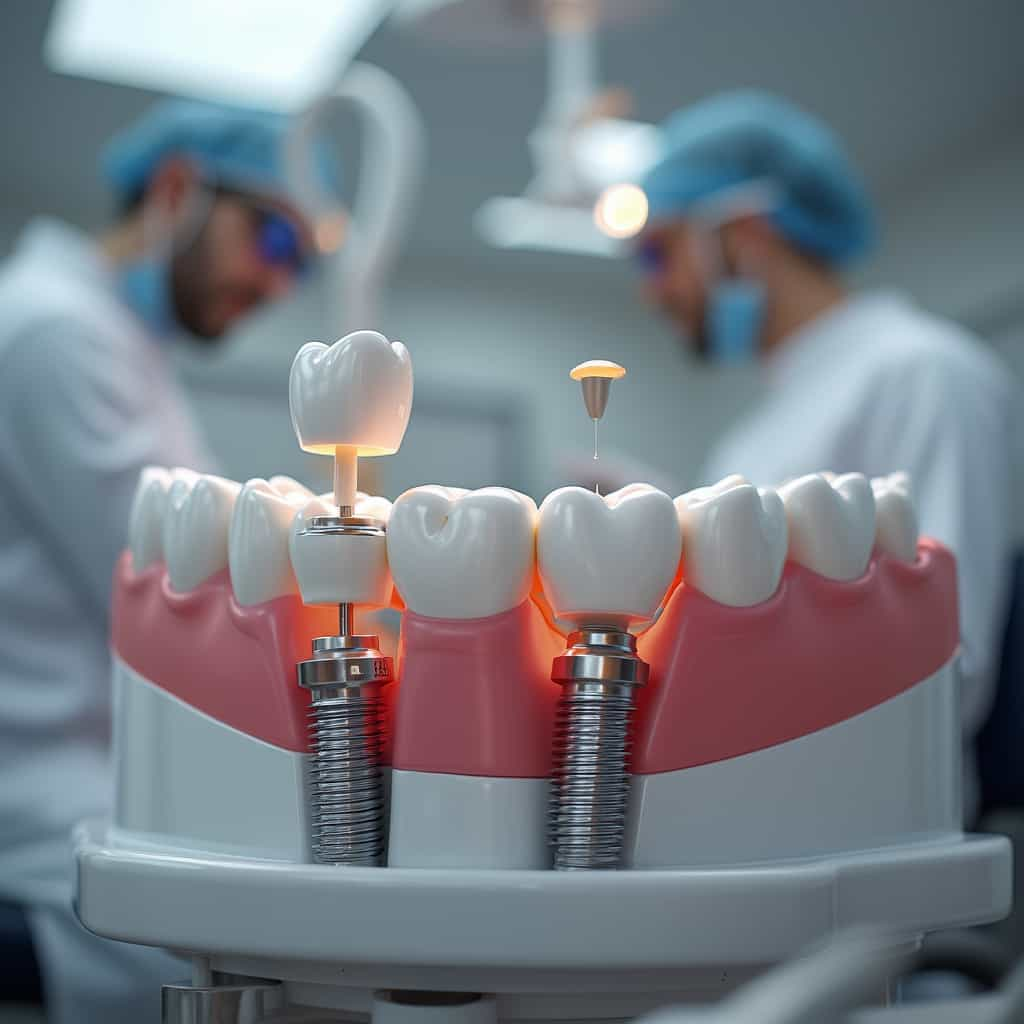Dental implants have emerged as a quintessential solution in modern dentistry for individuals suffering from tooth loss. Known for their durability and aesthetic appeal, dental implants have become a popular choice, moving beyond traditional bridges and dentures. The procedure’s success lies in its ability to mimic natural tooth roots using biocompatible materials, typically titanium. This approach not only replaces missing teeth but also preserves jawbone integrity, preventing further oral health complications.
For decades, individuals over the age of 55 have been the primary candidates for dental implants, largely because tooth loss becomes more prevalent with age. However, there’s a notable shift as younger individuals are increasingly considering implants as a viable option. This shift is driven by various factors, including rising oral health awareness and aesthetic considerations.
Despite their benefits, dental implants pose certain complications for those under 55. Younger patients often encounter distinct challenges compared to their older counterparts. Bone density and growth can be concerns; as jawbones are still developing in younger individuals, this can affect the implant’s stability over time. Experts, including Dr. Michael Keren, a renowned dental surgeon, emphasize the importance of assessing bone maturity before proceeding with implant surgery in younger patients.
Recent studies raise interesting debates about the long-term effects of implants in younger individuals. While traditional perceptions suggest that younger patients are less likely to need implants due to lower incidents of tooth loss, factors like sports injuries, congenital tooth absence, and accidents present valid cases for implants. Dr. Sarah Willis, from the Dental Research Institute, argues that while these implants are feasible, they require careful individual evaluations to ensure that they do not impede future dental developments.
The current methods for dental implant procedures are relatively straightforward. A comprehensive assessment, including X-rays and CT scans, determines the patient’s suitability. This is followed by implant placement, which involves inserting the implant into the jawbone. A healing period allows osseointegration, where the bone naturally fuses with the implant. Subsequently, a prosthetic tooth is attached, completing the restoration process.
One of the most intriguing avenues in dental implantology is the exploration of new materials and techniques. Recent experiments are leaning towards ceramic implants as an alternative to titanium, offering a metal-free option. Ceramic implants are particularly interesting for patients with metal allergies or those desiring a holistic approach. Furthermore, they promise potential aesthetic advantages due to their closer resemblance to natural teeth.
Innovative treatment strategies are also under exploration. One such development is the use of 3D printing technology in crafting customized implants and prosthetics. This advancement allows for a precise fit and streamlines the manufacturing process, potentially reducing patient chair time and improving overall satisfaction.
Geographical trends reveal fascinating insights into the prevalence and accessibility of dental implants. In the United States, the procedure has become relatively mainstream, with an estimated 500,000 implants placed annually. Europe and Australia also see high adoption rates, often supported by well-established dental care systems. Conversely, in regions like Asia and Africa, cultural factors and economic constraints can limit access to such advanced dental solutions.
It’s worth noting that while dental implants are considered permanent solutions, they require diligent oral hygiene and regular dental check-ups to maintain their success. As with any surgical procedure, there are potential risks, such as infection or implant failure, though these remain relatively rare when implants are placed by experienced professionals.
Looking ahead, the field of dental implantology is poised for promising advancements. Ongoing research endeavors are honing techniques to enhance the osseointegration process, minimize recovery times, and improve success rates. Furthermore, collaboration between researchers and clinicians globally will likely continue to bridge the accessibility gap, making implants a feasible solution across diverse demographics.
You may also like
Dental Implants: Options and Emerging Innovations for Seniors
Dental implants have revolutionized tooth replacement, offering a long-lasting solution. This article discusses various dental implant methods and treatments, highlights specific challenges for individuals over 55, and explores innovative experimental studies in the field.
Elderly Care with Caregivers: Costs and Benefits Across Regions
Elderly care with professional caregivers has become a crucial service in our aging societies. This article delves into the proposals, costs, and benefits of hiring caregivers, as well as the geographical variances in care options and challenges.
Elderly Care in Nursing Homes: Proposals, Costs and Advantages
This article explores the intricacies of elderly care in nursing homes, shedding light on various proposals, costs, and benefits. It delves into regional differences in elderly care practices and explores the social, economic, and emotional impacts on families and caregivers.
External Hearing Aids: Technologies and emerging innovations
Exploring the landscape of external hearing aids, this article delves into current technologies, emerging innovations, and geographical trends in usage. The piece provides insights into the devices available on the market and the futuristic studies reshaping the hearing aid industry.
Internal Hearing Aids and Cutting-Edge Technologies
This article delves into the advancements and variety of internal hearing aids, highlighting emerging technologies and geographical usage trends. It explores current devices, ongoing research, and the global landscape of hearing aid adoption.
